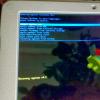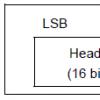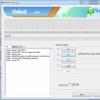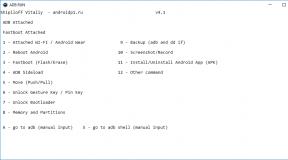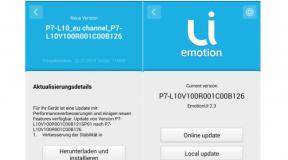Efferalgan for children: instructions for use. Instructions for the use of efferalgan syrup Side effects of efferalgan
The drug is administered orally 1-2 hours after a meal.
The average single dose depends on the child's body weight and is 10-15 mg / kg of body weight 3-4 times / day. The maximum daily dose is 60 mg / kg. The interval between doses is 4-6 hours.
For convenience and accuracy of dosing, use a measuring spoon. The measuring spoon has graduations indicating single dose(15 mg / kg) for children with body weight 4, 8, 12 or 16 kg respectively. Unmarked divisions correspond to body weight 6, 10 or 14 kg.
| Child's age | Child body weight (kg) | Measuring spoon mark (paracetamol content / solution volume) |
| 1-3 months | On the recommendation of a doctor. | |
| 3-5 months | 6-8 | 6 (90 mg / 3 ml) |
| 5 months-1 year | 8-10 | 8 (120 mg / 4 ml) |
| 1-2 years | 10-12 | 10 (150 mg / 5 ml) |
| 2-3 years | 12-14 | 12 (180 mg / 6 ml) |
| 3-4 years | 14-16 | 14 (210 mg / 7 ml) |
| 4-6 years old | 16-20 | 16 (240 mg / 8 ml) |
| 6-7 years old | 20-22 | 16 + 4 (300 mg / 10 ml) |
| 7-8 years old | 22-24 | 16 + 6 (330 mg / 11 ml) |
| 8-9 years old | 24-26 | 16 + 8 (360 mg / 12 ml) |
| 9-10 years old | 26-28 | 16 + 10 (390 mg / 13 ml) |
| 10-11 years old | 28-30 | 16 + 12 (420 mg / 14 ml) |
| 11-12 years old | 30-32 | 16 + 14 (450 mg / 15 ml) |
The ratio of the age and body weight of the child is given roughly.
Children aged 3 months to 6 years (body weight 6-20 kg): fill the measuring spoon up to the mark according to the table. For example, if the child's body weight is from 6 to 8 kg, then the measuring spoon should be filled up to the mark corresponding to 6 kg.
Children aged 6 to 12 years (body weight 20-32 kg): Fill the measuring spoon up to the 16 kg mark, then refill the measuring spoon up to the mark according to the table. For example, if a child's body weight is between 20 and 22 kg, then fill the measuring spoon up to the 16 kg mark, then refill the measuring spoon up to the 4 kg mark.
The drug can be given to a child without dilution or after dilution with water or milk.
The duration of treatment is 3 days when used as an antipyretic agent and up to 5 days as an analgesic agent. If it is necessary to take the drug for a longer period, a doctor's consultation is required.
On our website you will find detailed information about the drug EFFERALGAN (syrup) and its instructions for use in Russian. The instructions for use contain information about the composition, indications for use, contraindications, dosage, peculiarities of taking in children, during pregnancy and lactation, interaction with other drugs, side effects and overdose of EFFERALGAN. You can also familiarize yourself with the conditions and shelf life of the drug EFFERALGAN and its analogues.
1.0 ml of the drug contains
active substance: paracetamol 30 mg,
excipients: macrogol-6000, sugar syrup, sodium saccharin E954, potassium sorbate, anhydrous citric acid, caramel-vanilla flavor *, purified water.
* Composition: gamma-octalactone, gamma-hexalactone, diacetyl, acetylmethylcarbinol, isoammyl cinnamate, gamma-heptalactone, vanillin, propylene glycol, triacetin, caramel color.
DESCRIPTION
Slightly viscous brown solution with caramel-vanilla smell.
PHARMACOTHERAPY GROUP
Other analgesics-antipyretics. Anilides.
ATX code: NO2BE01
PHARMACOLOGICAL PROPERTIES
Pharmacokinetics
Oral absorption of paracetamol occurs quickly and completely. Peak plasma concentrations are reached within 30-60 minutes after ingestion.
Paracetamol is rapidly distributed in all tissues. Concentrations in blood, saliva and plasma are comparable. Plasma protein binding is weak.
Paracetamol is predominantly metabolized in the liver and excreted in the urine. 90% of the dose taken is excreted by the kidneys within 24 hours, mainly in the form of glucuronide conjugates (60-80%), as well as sulfate conjugates (20-30%). Less than 5% is displayed unchanged. Half-life -
2 hours.
A small part of paracetamol, with the participation of cytochrome P450, is converted into a metabolite, which enters into a combination with glutathione, and is excreted in the urine. In case of an overdose, the amount of this metabolite increases.
In the case of severe renal failure (creatinine clearance below 10 ml / min), the excretion of paracetamol and its metabolites slows down.
Pharmacodynamics
Efferalgan contains paracetamol, which has analgesic and antipyretic effects.
INDICATIONS FOR USE
Symptomatic treatment of mild to moderate pain and / or febrile conditions.
DOSAGE AND METHOD OF APPLICATION
This dosage form- solution intended for children weighing 4 to 32 kg (approximately 1 month - 12 years).
The solution can be taken by mouth undiluted or diluted in a small amount of liquid (eg water, milk, juice).
In children, dosage should be observed in accordance with the child's body weight. Age and corresponding body weight are approximate.
The recommended daily dose of paracetamol is about 60 mg / kg / day. The average single dose depends on the child's body weight and is 10-15 mg / kg of body weight every 6 hours 4 times a day.
For convenience and accuracy of dosing, it is necessary to use the graduated measuring spoon attached to the preparation. On the measuring spoon, there are divisions denoting a single dose for a child with the corresponding body weight: 4, 6, 8, 10, 12, 14, 16 kg. Unmarked divisions correspond to the intermediate body mass: 3, 5, 7, 9, 11, 13, 15 kg.
The measuring spoon is filled in accordance with the child's body weight and the fluid level is adjusted by divisions.
For a child weighing from 4 to 16 kg: fill the measuring spoon according to the division corresponding to the child's body weight, or use the division closest to the child's body weight.
For example, with a child's body weight from 4 to 5 kg: fill a measuring spoon to the division corresponding to 4 kg. If necessary, taking the drug can be repeated after 6 hours.
For a child weighing between 16 kg and 32 kg: first fill the measuring spoon to a certain graduation, and then refill the measuring spoon until the graduation required to obtain the desired child's body weight.
For example, with a child's body weight from 18 to 19 kg, first fill the measuring spoon to the 10 kg graduation, and then fill it a second time to the 8 kg graduation. If necessary, taking the drug can be repeated after 6 hours.
Regular use avoids fluctuations in pain intensity or temperature levels. In children, a regular interval between doses, day and night, should be observed, preferably 6 hours.
In the case of severe renal failure (creatinine clearance below 10 ml / min), the interval between doses of the drug should be at least 8 hours.
Duration of treatment: 3 days - as an antipyretic agent,
5 days - as a pain reliever.
SIDE EFFECT
Possible diarrhea, abdominal pain, nausea, vomiting, allergic reactions(skin rash, itching, urticaria, Quincke's edema, anaphylactic shock), tenesmus, decrease or increase in prothrombin index, decrease blood pressure(as a symptom of anaphylaxis).
Rarely - anemia, thrombocytopenia, leukopenia, neutropenia.
At long-term use in large doses, hepatotoxic and nephrotoxic effects are possible.
When the appearance adverse reactions stop taking the drug and see your doctor.
CONTRAINDICATIONS
Do not use this medicine if your child has:
- hypersensitivity to paracetamol or other components of the drug;
- severe dysfunction of the liver, kidneys;
- blood diseases;
- deficiency of the enzyme glucose-6-phosphate dehydrogenase;
- age up to 1 month.
Carefully
The drug should be taken with caution in case of impaired liver function, Gilbert's syndrome. Before taking the drug, you should consult your doctor.
INTERACTION WITH OTHER DRUGS
Oral anticoagulants
When receiving maximum doses paracetamol (4 g / day) for at least 4 days there is a risk of an increase in the effect of an oral anticoagulant and an increased risk of bleeding. Therapy should be monitored for INR (International Normalized Ratio) at regular intervals. If necessary, the dose of the oral anticoagulant should be adjusted during the treatment with paracetamol and after the discontinuation of paracetamol.
Impact on laboratory test results
When abnormally high concentrations taking paracetamol can affect the results of blood glucose determination through the glucose oxidase-peroxidase reaction.
The use of paracetamol can affect the results of the determination of blood urea by the method, which uses phosphotungstic acid.
When Efferalgan is used together with barbiturates, tricyclic antidepressants, anticonvulsants (phenytoin), flumecinol, phenylbutazone, rifampicin and ethanol, the risk of developing hepatotoxic effects is significantly increased.
Reception together with salicylates significantly increases the risk of nephrotoxic effects. Salicylamide can prolong the half-life (T½) of paracetamol. With simultaneous use with chloramphenicol, the toxicity of the latter increases. Probenecid leads to an almost twofold decrease in the clearance of paracetamol due to the suppression of binding with glucuronic acid.
PRECAUTIONARY MEASURES
To avoid the risk of overdose, before using the drug, it is necessary to check that other drugs used together do not contain paracetamol.
Maximum recommended doses:
- in children weighing up to 37 kg, the total dose of paracetamol should not exceed 80 mg / kg / day;
- in children weighing 38 to 50 kg, the total dose of paracetamol should not exceed 3 g / day;
- in adults and children weighing more than 50 kg, the total dose of paracetamol should not exceed 4 g / day.
Precautionary measures
When treating a child with paracetamol at a dose of 60 mg / kg / day, the concomitant use of another antipyretic agent is justified only if paracetamol is ineffective.
For patients with diabetes or a low carbohydrate diet, when calculating the daily sugar intake, the sugar contained in the preparation should be taken into account: 0.67 g of sugar in a dose of the preparation for every 4 kg of body weight, according to the graduation on a measuring spoon.
Pregnancy and lactation
Paracetamol crosses the placental barrier and is excreted with breast milk... In the case of the use of paracetamol during pregnancy and lactation, the expected benefits of therapy for the mother and the potential risk for the fetus and child should be carefully weighed.
Features of influence medicinal product on the ability to manage vehicle and potentially dangerous mechanisms
Efferalgan is a universal remedy that allows you to bring down the temperature of a child in a short time. Usually, this drug it is prescribed during the period of acute respiratory and infectious diseases. Syrup is often used as an anesthetic to cope with headache, toothache, muscle pain.
Indications and contraindications
At the heart of such a syrup as "Efferalgan", the main component is paracetamol, which has an analgesic and antipyretic effect on the body of children. The drug is produced in the form of a syrup with a pleasant taste, which is to the taste of children. A convenient measuring spoon provides convenience during the intake and strict adherence to the dosages prescribed in the instructions.
Children's "Efferalgan" is designed to lower body temperature during the period of tolerance of the child to diseases such as influenza, acute respiratory infections, infections. It also effectively relieves pain and has an anti-inflammatory effect in case of headaches and toothaches, after skin lesions as a result of burns or surgery.
Before giving a certain dose of syrup to a child, you should make sure that such treatment will not harm him. To do this, it is enough to familiarize yourself with the contraindications, which include:
- intolerance to paracetamol, which is the main component of the syrup;
- serious diseases of the liver, kidneys;
- diseases related to changes in blood composition;
- the age of the child. If the child is under 1 month old, then you should refrain from taking the drug;
- the presence of Gilbert's disease.

How to use?
To comply accurate dosage the drug must be followed by the instruction, which indicates that the syrup can be taken by children who are 1 month old. Depending on the age of the child, the dosage of the drug will also change. The main recommendation for use is the rate, which should not be exaggerated. This norm is 10-15 mg / kg of the child's weight. The syrup should be taken no earlier than 1.5 hours after the last meal. The time between taking Efferalgan should not be less than 5 hours. A child can take no more than 3-4 dosages of the drug per day.
"Efferalgan" comes complete with a measuring spoon, on which the marks are applied. It is quite easy for parents to navigate by these marks when dosing the drug. If you look closely at a measuring spoon, you can see only the numbers 4, 8, 12, 16. These numbers indicate the estimated weight of the child.
In order to measure the dosage of syrup for a child aged 3 months to 6 years, with a weight of 6 to 20 kg, you need to know the exact weight. So, if the child weighs 6.5-7 kg, then the measuring spoon will need to be filled up to the 6 mark.
Children weighing from 20 to 32 kg, aged 6-12 years, should take the syrup, also focusing on their own weight. For example, a child weighs 21 kg. To use the required dosage, initially you need to fill the measuring spoon to the maximum division - 16 kg, drink the syrup, then refill the spoon to the 4 mark.
The syrup tastes good, so most children take it with pleasure. But there are also children who refuse to take any medicine in its pure form. In this case, the syrup can be mixed with any liquid and given to the child. The course of taking the drug depends on what it was used for.
If, with the help of syrup, the temperature gets lost in a viral or infectious disease, then the course should last no more than 3 days. When eliminating painful sensations after burns or injuries "Efferalgan" is taken for 5 days. If the expected effect does not come from taking this remedy, but you should contact a doctor who will advise on this issue.

Side effects and overdose
Efferalgan is effective remedy, the price of which is adequate. Therefore, it is in great demand in families with children. But if you do not follow the instructions and violate the dosage, then you may encounter such side effects as:
- stomach ache;
- nausea, which is often accompanied by vomiting;
- allergy to the compound of the drug, which can manifest itself of varying degrees of complexity, from skin rashes to Quincke's swelling.
In especially severe cases, you can encounter thrombocytopenia, anemia, leukopenia, agranulocytosis. The consequences can be terrible, therefore, at the slightest changes in the child's body after taking the drug, you should immediately consult a doctor.
The dosage of the drug is indicated in the instructions for a reason, and you should not ignore it, because we are talking about the health of the child. "Efferalgan", if taken incorrectly and dosage deviations upwards, can lead to an overdose, the main symptoms of which are:
- cutting pain in the abdomen;
- nausea, vomiting, often turning into vomiting;
- pallor and painful appearance of the skin;
- excessive sweating.
If, after the appearance of signs of an overdose, appropriate measures were not taken, then against the background of this, renal failure, liver damage. The child may be in a coma. In order to avoid disastrous consequences after the first sign of an overdose of the drug, you should consult a doctor. As a rule, in case of an overdose in children, gastric lavage is performed, the appointment of activated charcoal or polyphepan, which are enterosorbents. The introduction of the antidote is also provided.

What should you consider before taking?
"Efferalgan" contains paracetamol, an excess of which in a child's body can provoke side effects. Therefore, in order to avoid this, syrup for children is not recommended to be taken in parallel with other drugs, which also contain it.
Do not neglect the duration of the drug intake. If you do not follow the instructions and make the use of the syrup longer, then such a decision can affect the condition of the liver and the composition of the blood. If an increase in the course of treatment was prescribed by a doctor, then it is necessary to take care of monitoring these organs.
"Efferalgan" contains sugar in its composition, therefore, it should be prescribed with caution to children who have a disease such as diabetes mellitus, or observe diet food, which provides for a reduced sugar intake. At the time of treatment of children with this drug, it is worth refusing to undergo tests, because paracetamol tends to change the content of glucose and uric acid in the blood.
The syrup should be prescribed by the attending physician, while indicating the correct dosage. It is worth contacting him even if, after the period of admission indicated in the instructions, the child's condition has not improved.

Price
Efferalgan is commercially available and can be purchased at any pharmacy in the country. In addition, the price of this drug is pleasantly pleasing. So, a 90 ml bottle of syrup for children will cost about 100 rubles. The price of this syrup for children is relatively loyal compared to analogues.
Some antipyretic syrups for children are not intended for long-term storage, so after opening after a short time they lose their properties. Efferalgan can be stored for three years from the date of manufacture. A very long period is provided if the storage rules are observed. Efferalgan should be stored in a cool, dark place, where the air temperature does not exceed 30 degrees.
The syrup intended for children effectively relieves the child of painful sensations caused by infectious and viral diseases, normalizes body temperature. Efferalgan, the price of which is affordable, is considered an indispensable drug in the home medicine cabinet, which is suitable for children from 1 month old. The syrup tastes good.

Unfortunately, almost all children suffer from various acute respiratory and infectious diseases, and more than once. But with every illness of the child, the parents worry, especially if the little patient develops a fever. Of course, the phenomenon itself - an increase in body temperature - is normal. In this way, the body produces interferon, a substance that helps fight the pathogen. But with a fever in a beloved child, the mother still develops a state close to panic. Antipyretic drugs will come to the rescue, for example, Efferalgan for children.
Indications for Efferalgan's use
Efferalgan is medicinal product, active substance which is paracetamol. The latter has an analgesic, antipyretic and weak anti-inflammatory effect. Efferalgan is used for childhood fever of various origins, including acute respiratory infections, infections. In addition, the medicine is also prescribed for pain in children, for example, for angina, headache, myalgia.
Method of using Efferalgan
Antipyretic for children is available in several forms. Moreover, the choice of the dosage form depends on the age of the patient. So, for example, Efferalgan antipyretic suppositories for children are convenient to use for babies who still cannot drink from a spoon, and babies up to 3 years old. By the way, this dosage form is used rectally. The dosage of Efferalgan suppositories is calculated according to the formula 60 mg of the substance for each kilogram of the child's body weight.
Children from the age of 1 month to 5 months (weighing 4-7 kg) are prescribed 1 suppository 80 mg three to four times a day. Moreover, the time interval between doses should be at least 6 hours. Children's candles from the temperature Efferalgan at a dosage of 150 mg are used for patients aged 5 months and up to three years with a body weight of 8-14 kg. It is necessary to apply 1 suppository two to four times a day.
Another form of antipyretic agent - Efferalgan syrup for children - is prescribed from the first month of life. A measuring spoon is attached to the bottle, making it easy to calculate the dosage of Efferalgan for children:
An infant aged 1-3 months is prescribed only by a doctor.
A baby at the age of 3-5 months with a body weight of 6-8 kg needs 3 ml (90 mg) of the drug.
From 5 months to 1 year with a body weight of 8-10 kg, 4 ml (120 mg) is indicated.
- for a child of 1-2 years old, 10-12 kg, the dosage is 5 ml (150 mg);
- for a 2-3 year old patient weighing 12-14 kg 6 ml (18 mg);
- a 3-4 year old toddler with a body weight of 14-16 kg is prescribed 7 ml (210 mg);
- the dosage of Efferalgan syrup for children for a child 4-6 years old with a weight of 16-20 kg is 8 ml (240 mg);
- for 6-7 years old with a weight of 20-22 kg - 10 ml (300 mg);
- from 7-8 years old and with a weight of 22-24 kg, 11 ml (330 mg) is shown;
- 8-9 years old with a weight of 24-26 kg - 12 ml (360 mg);
- 9-10 years old with a weight of 26-28 kg - 13 ml (390 mg);
- 10-11 years old with a body weight of 28-30 kg - 14 ml (420 mg);
- 11-12 years old with a body weight of 30-32 - 15 ml (450 mg).
When calculating the dosage, first of all, the child's body weight should be taken into account.
Efferalgan - contraindications and side effects
In general, Efferalgan is well tolerated by children, but in rare cases, individual intolerance to the components of the antipyretic is possible. It is expressed in the appearance of hives, skin rash or itching, even Quincke's edema. In rare cases, taking the drug  accompanied by such side effects like vomiting, nausea, abdominal pain, thrombocytopenia, nose bleed or bleeding gums.
accompanied by such side effects like vomiting, nausea, abdominal pain, thrombocytopenia, nose bleed or bleeding gums.
Registration number:
Tradename: Efferalgan
International non-proprietary name : Paracetamol
Chemical rational name: N- (4-hydroxyphenyl) acetamide
Dosage form: oral solution (for children) 3% (complete with a dosing spoon).
Compound
1 ml of the drug contains 30 mg of paracetamol.
excipients: macrogol 6000, sucrose solution, sodium saccharin, sorbic acid, sodium methyl parahydroxybenzoate, sodium propyl parahydroxybenzoate, caramel vanilla flavor, water.
Description
Transparent, homogeneous, slightly viscous solution of yellow-brown color, with caramel-vanilla taste and smell.
Pharmacotherapeutic group
Analgesic non-narcotic drug.
ATX code:
Pharmacological properties
Efferalgan contains paracetamol, which has analgesic and antipyretic effects.
Indications for use
Efferalgan is used in children from 3 months to 12 years old (weighing from 6 to 32 kg) as an antipyretic agent in acute respiratory diseases, flu, childhood infections, post-vaccination reactions and other conditions accompanied by an increase in body temperature.
The drug is also used as an analgesic for pain syndrome of mild to moderate intensity, including: headache and toothache, muscle pain, neuralgia, pain in trauma and burns.
Contraindications
Do not use this medicine if your child has:
- hypersensitivity to paracetamol or other components of the drug, especially parabens (methyl and propyl parahydroxybenzoate);
- severe dysfunction of the liver, kidneys;
- blood diseases;
- deficiency of the enzyme glucose-6-phosphate dehydrogenase;
- age up to 1 month.
Carefully- The drug should be used with caution in case of impaired liver or kidney function, with Gilbert's syndrome. Before taking the drug, you should consult your doctor.
To determine the dose and regimen of taking the drug in children aged 1 to 3 months, it is necessary to consult a doctor.
Method of administration and dosage
The drug is administered orally with a large amount of liquid 1-2 hours after a meal.
The average single dose of Efferalgan depends on the child's body weight and is 10-15 mg / kg of body weight 3-4 times a day. The maximum daily dose should not exceed 60 mg / kg body weight. The interval between doses of the drug should be 4-6 hours. Use a measuring spoon for convenient and accurate dosing.
The measuring spoon has graduations indicating a single dose (15 mg / kg) for a child with the corresponding body weight: 4, 8, 12 or 16 kg. Unmarked divisions correspond to intermediate body weights: 6, 10 or 14 kg.
Children from 3 months to 6 years old (6-20 kg): fill the measuring spoon up to the mark according to the table. For example, if your child weighs 6 to 8 kg, fill the measuring spoon up to the mark corresponding to 6 kg.
Children from 6 to 12 years old (20-32 kg): Fill the measuring spoon up to the 16 kg mark, then refill the measuring spoon up to the mark according to the table. For example, if your child weighs between 20 and 22 kg, fill the measuring spoon to the 16 kg mark, then refill the measuring spoon to the 4 kg mark.
The drug can be given to a child without dilution or after dilution with water or milk.
Duration of treatment:
3 days as an antipyretic and up to 5 days as a pain reliever. If it is necessary to continue taking the drug, a doctor's consultation is required.
Side effect
Possible nausea, vomiting, abdominal pain, allergic reactions (skin rash, itching, urticaria, Quincke's edema).
Rarely - anemia, leukopenia, agranulocytosis, thrombocytopenia.
With prolonged use in high doses, hepatotoxic and nephrotoxic effects are possible, as well as the occurrence of methemoglobinemia and pancytopenia. If any adverse reactions occur, stop taking the drug and consult a doctor.
Overdose
Signs of acute paracetamol poisoning are nausea, vomiting, stomach pain, sweating, pallor of the skin. After 1-2 days, signs of liver damage appear - soreness in the liver area, an increase in the activity of "liver" enzymes in the blood, an increase in prothrombin time. In severe cases, liver failure, hepatonecrosis, encephalopathy and coma develop. If symptoms of poisoning occur, stop using the drug and consult a doctor immediately. Recommended gastric lavage, intake of enterosorbents (activated carbon, polyphepan), intravenous administration antidote N-acetylcysteine, methionine intake.
Interaction with other medicinal products
When Efferalgan is used, together with barbiturates, tricyclic antidepressants, anticonvulsants (phenytoin), zixorin, phenylbutazone, rifampicin and alcohol, the risk of developing hepatotoxic effects is significantly increased.
Taking together with salicylates significantly increases the risk of nephrotoxic effects. With simultaneous use with chloramphenicol (chloramphenicol), the toxicity of the latter increases.
Paracetamol, contained in Efferalgan, enhances the effect of anticoagulants indirect action and reduces the effectiveness of uricosuric drugs.
special instructions
Efferalgan contains paracetamol, therefore, in order to avoid exceeding the maximum daily dose, you should not use the drug at the same time as other medicines containing paracetamol.
When using the drug for more than 5-7 days, it is necessary to control the picture of peripheral blood and functional state liver.
In the case of taking the drug by children suffering from diabetes mellitus or are on a diet with reduced content sugar, it should be borne in mind that 1 ml of the drug contains 0.335 g of sugar.
Paracetamol distorts the results of laboratory tests of the content of glucose and uric acid in the blood plasma.
Without therapeutic effect: Continuation of fever for more than 3 days and pain syndrome for more than 5 days, consult your doctor.
Release form
Solution for oral administration in a plastic bottle of 90 ml, sealed with a push-and-open cap made of polyethylene. 1 bottle with a measuring spoon and instructions for use in a cardboard box.
Storage conditions
Store at a temperature not exceeding 30 ° C, out of the reach of children.
Best before date
3 years.
Do not use the drug after the expiry date printed on the package.
Conditions of dispensing from pharmacies
Without recipe.
Manufacturer
Bristol-Myers Squibb, France
304, avenue du Docteur Jean Bra 47000 AGEN - France
Moscow representative office:
123001, Russia, Moscow, Trekhprudny lane, 9, building 1B.





